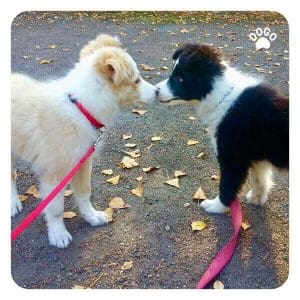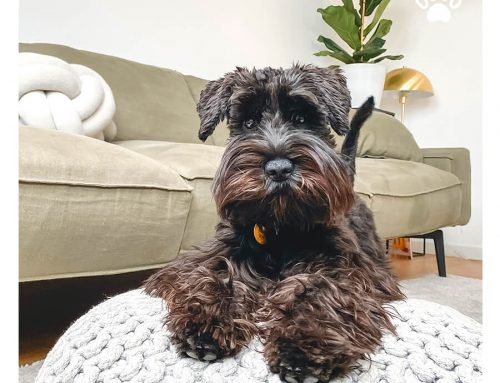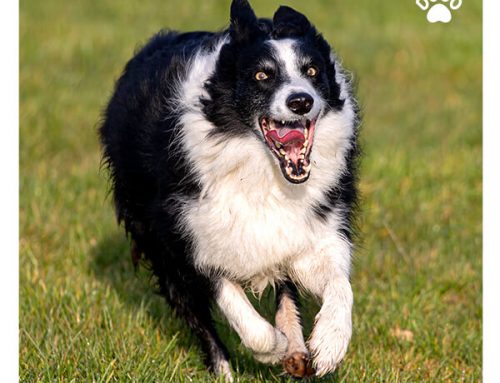
How to achieve this?
1. Replace the short leash with a longer one.
The recommended length is 5 meters. It will give your pet more freedom. Dogs have a different pace than humans. Sometimes things will interest them and make them move faster. Sometimes they want to stop to examine some smell and mark the area. If you keep your dog on a short leash, you restrict their freedom. They probably want to reach a certain place, but the leash makes this impossible. Therefore, they try to use their strength. This is how the problem with pulling begins.
2. Do not use an automatic ”flexi” leash.
Do you know how this leash works? To extend it, your dog needs to create resistance, i.e. simply pull. When they pull, the lead unfolds and the dog reaches the chosen place. Then this “self-resistance” occurs. Your four-legged companion reaches their goal by pulling the leash. This way, they realize that such behavior pays off.
It is better to exclude bad habits right away. You can change the “flexi” leash to a classic long one. If for some reason you do not want to invest in a new gadget, you can completely expand the flexi leash and block it. Then you will have the old but new leash.
3. Never follow the dog when they are pulling.

To further elaborate on this point, it is important to understand why following a dog when they pull on a leash can lead to a negative pattern of behavior. When a dog pulls and you allow them to lead you, they learn that they are in charge and they can control where you go. This can lead to a sense of dominance, which can exacerbate other behavioral problems. It’s important to establish yourself as the pack leader and show your dog that you are in control. This will help them to feel secure and relaxed, and will ultimately lead to a more positive walking experience for both you and your dog.
Do not give in, try to change your strategy:
- Stand still, hold the leash in your hands close to your body.
- Do not pull the dog towards forcefully. Encourage your pup with something cool – you can use their favorite toy or treats.
- Praise them enthusiastically as soon as they approach.
- Take a few steps back, continuously rewarding and praising your pet, your dog should follow you.
- Smoothly turn around and go towards the place your dog wanted to go. At the same time praise and reward your dog when they go right next to you on a loose leash.
By doing so, you show your dog that they can get to the desired place together with you. They do not have to do it using their force. All you have to do is show your dog that walking together is something attractive and the coolest in the world!
4. Praise your dog heavily and reward them every time they walk on a loose leash.
Catch any moment when your dog is not pulling. Praise them and reward them. After a while, your dog will give up pulling on a leash. It will become more beneficial and pleasant to stay close to you.
Expanding on this point, it’s important to note that consistency is key when it comes to reinforcing positive behavior. It’s not enough to reward your dog once or twice and expect them to immediately change their behavior. Instead, you should make a habit of praising and rewarding your dog every time they walk on a loose leash. This will help to reinforce the behavior and make it more likely that they will continue to walk calmly and obediently with you in the future.
5. Introduce exercises from Dogo App.

Remember not to punish your dog when they are pulling on a leash. By doing so, you will provoke negative emotions in your dog and discourage them to work with you. This will only make the problem worse.
Good luck!






